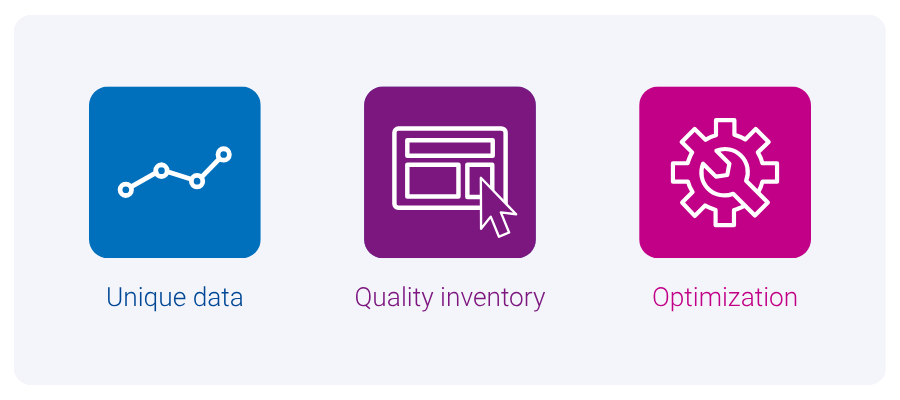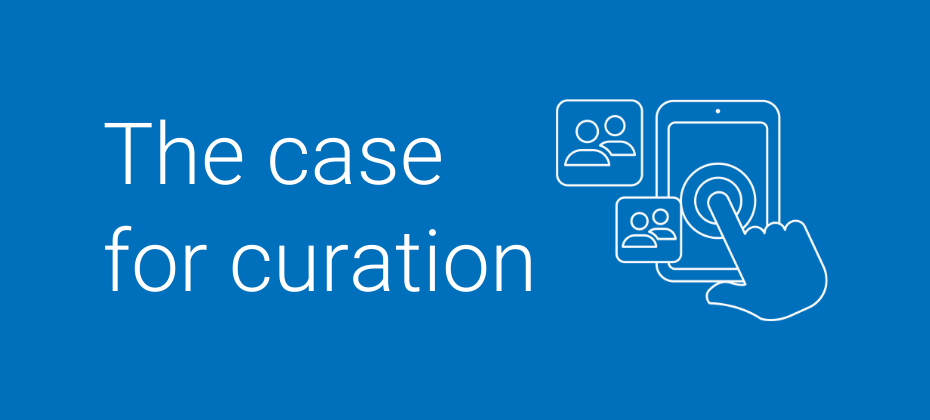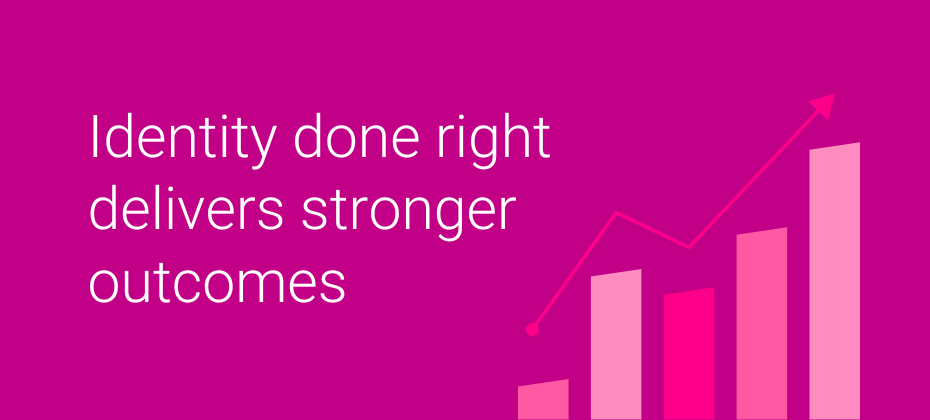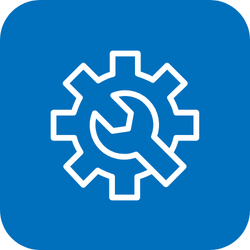At A Glance
Curation is changing how media is bought and sold, moving beyond open auctions and static site lists to more efficient deals. By combining unique data, real-time supply connections, and continuous optimization, curated PMPs reduce waste and improve results. Audigent's, a part of Experian, solutions help marketers achieve measurable outcomes with curated strategies that deliver better targeting, higher engagement, and improved ROI.If you buy media today, you’re already feeling the shift: the best results don’t always come from broad, open auctions or static “safe site” lists; they’re coming from deals that combine the right data with the right inventory and let algorithms optimize in real time. That’s curation. And when it’s done right, it reduces data and media waste for buyers and raises eCPMs (effective cost per thousand impressions) and win rates for publishers.

As part of our Cannes Content Studio series, leaders from Butler/Till, Index Exchange, OpenX, PubMatic, and Yieldmo discuss how curation cuts waste and lifts results.
What is real curation?
Real curation isn’t “packaging inventory.” It’s a strategic framework built on three pillars:
Why it matters: Manual approaches hit a ceiling. They can’t react quickly to shifting content, identity signals, or auction dynamics. That’s where technology partners come in, keeping the optimization loop running continuously.
Intelligence at every touchpoint
Curation isn’t about shifting control between platforms. It’s about better brand decisions, connecting opportunity-rich supply to the brand’s preferred buying platform and enriching each buy with audience data.In practice, supply-side platforms (SSPs) are ingesting richer signals to route inventory more effectively and support frequency caps and deal prioritization, in collaboration with demand-side platforms (DSPs).
“I think we’re seeing a shift toward bringing more DSP capabilities into the SSP, like supply-side targeting and data driven curation. Advancements in areas like CTV are enabling targeting based on content signals, and SSPs are pulling in more data to inform which supply is sent to the DSP, helping with things like frequency caps.”
OpenXMatt Sattel
Why page-level targeting beats static lists
Static domain lists were a useful first step for quality control. The intent was sound, but the approach was too cumbersome for today’s signal-rich buying. Today, AI and contextual engines read the page, not just the site, and adapt in real time.

Page-level logic delivers three key benefits:
- Accuracy by targeting high-intent, page-level content.
- Relevance by matching the creative to both the content and the audience context.
- Speed by enabling campaigns to move away from underperforming pages in real time, without waiting for a manual trafficking change.
“AI-driven contextual engines evaluate the page, not just the domain, to curate inventory in real time. That moves curation from static allowlists to adaptive logic for greater accuracy, relevance, and speed.”
YieldmoSophia Su
Partnerships broaden who influences the buy

Curation works when publishers, agencies, data partners, and platforms share signals and KPIs.
- Horizontal curation (across multiple SSPs) assembles broader, higher-quality reach and resilience, ideal for scale and diversity of supply.
- Vertical curation (an SSP’s in-house product) provides deep controls within a single exchange, useful for specific inventory strategies.
- Creative and data now shape supply and demand: better creative decisioning, tested against richer signals, improves outcomes.
DSPs remain central for activation and pacing. But the sell-side’s growing intelligence means more accurate inventory routing and signal application before a bid ever fires.
“Curation will continue to evolve through deeper data partnerships and expanded use across publishers and agencies, with more sophisticated types of optimization. DSPs will remain critical to activation, even as sell-side decisioning plays a larger role in identifying and shaping the supply to select.”
Index ExchangeMike McNeeley
Curation delivers access and measurable performance

Here’s what curated deals are delivering.
For buyers
| Result | Type of result |
| 36-81% | savings on data segments |
| 10-70% | lower cost per click (CPCs) |
| 1.5-3x | higher click-through rates (CTRs) |
| 10-30% | higher video completion rates |
For publishers
| Result | Type of result |
| 20% | bid density |
| 118% | win rate |
| 10% | revenue on discovered inventory |
| 25% | eCRM on incremental impressions |
Why it works: When data, supply, and optimization are integrated, you reduce waste, surface better impressions, and let algorithms compound your advantage. That’s why curated private marketplaces (PMPs) have grown at ~19% compound annual growth rate (CAGR) since 2019.
“Publishers using supply-side curation see ~15% more diverse buyers and 20–25% better performance than buy-side-only targeting. Smarter packaging and signal application tighten auctions and strengthen outcomes.”
PubmaticHoward Luks
Holistic curation streamlines planning and outcomes

Curation adds the data layer earlier in the buying process, starting at the supply-side. This creates more opportunities to reach the right audience and improves scale and performance. By replacing multiple line items with a single curated deal, campaign setup becomes faster and less error-prone. Curated deals also simplify measurement by including the necessary context for accurate attribution, while dynamic adjustments ensure campaigns remain optimized without requiring manual updates.
“Publishers using supply-side curation see ~15% more diverse buyers and 20–25% better performance than buy-side-only targeting. Smarter packaging and signal application tighten auctions and strengthen outcomes.”
Butler/TillGina Whelehan
It’s much more streamlined, bringing more pieces together so we’re thoughtful and holistic. Adding the audience and data element creates more scale and strategy in how we curate supply and data, and ultimately better results for clients.
The bottom line
Curation has matured from buzzword to performance system. DSPs still anchor activation and pacing, but better sell-side pipes now pre-route inventory and apply signals before any bid starts, making the whole system faster and more accurate. When you combine unique signals, tight supply connections, and always-on optimization, you gain addressability, reduce waste, and achieve better business outcomes for both buyers and sellers.
Curation isn’t just a trend; it’s where programmatic advertising is headed. Start testing curated PMPs today to see the difference for yourself.
Explore curated PMPs with Audigent
Curation FAQs
Curation in performance marketing is the process of combining data, inventory, and optimization to deliver better results. Audigent supports curated strategies through privacy-safe data and advanced integrations.
Curation reduces wasted spend by targeting high-quality impressions and optimizing campaigns in real time. Audigent’s solutions help marketers achieve higher click-through rates, lower costs, and better engagement across channels.
Curated PMPs are deals that use curated data and inventory to deliver measurable results. They help buyers save on data costs, improve ad performance, and achieve better video completion rates, while publishers see higher win rates and revenue.
Audigent provides unique data assets, privacy-safe integrations, and optimization tools that help marketers and publishers create curated deals. Our solutions ensure campaigns are more efficient, targeted, and effective from start to finish.
Horizontal curation combines inventory across multiple platforms for broader reach and diversity, while vertical curation focuses on deep control within a single platform. Both approaches can be tailored to specific campaign goals with Audigent’s expertise.
Latest posts

Reach de-identified patient and provider segments at scale across every channel. Pharmaceutical brands and media platforms, including connected TV (CTV), can activate HIPAA-compliant audiences built on real-world clinical and claims data through a new collaboration between PurpleLab and Experian. Targeting de-identified audiences is essential for engaging the right patients at pivotal moments in their health journey, maximizing ROI while safeguarding privacy and improving outcomes. Overall, prescription drugmakers spent $2.97 billion on national TV advertising in the first half of 2025, a 12.2% year-over-year increase, underscoring the growing demand for scalable, privacy-compliant healthcare advertising in premium media environments. Now, whether you're a pharma advertiser launching a new therapy or a platform curating health-focused inventory, PurpleLab’s integration refreshes the media planning ecosystem, offering marketers easier access to the audiences needed to drive impact. Activate with accuracy and scale PurpleLab’s de-identified healthcare segments, categorized by condition, treatment, specialty, and prescription behavior, are now accessible through Experian's data marketplace, streamlining media planning. This integration enables PurpleLab’s privacy-safe audiences to travel from discovery to omnichannel delivery. Experian then handles onboarding, activation, and audience expansion, in accordance with HIPAA and with industry standards. Utilizing Experian’s identity graph, spanning household and individual-level insights, as well as marketing attributes, these healthcare audiences can be: Onboarded securely, matching hashed emails or tokens to digital identifiers Activated across major channels, including CTV, mobile, display, and social Expanded with confidence, reaching more of the target population, patients, or healthcare professionals, without relying on third-party cookies This infrastructure unlocks greater scale and completeness for niche pharma audiences that have historically been hard to reach in digital and streaming environments. For brands navigating fragmented media and tightening privacy regulations, this collaboration provides the clarity and consistency they’ve been seeking. “We know healthcare marketers are under pressure to get it right: to respect privacy, be accurate, and scale. That’s why we’re excited to bring PurpleLab audiences into the Experian data marketplace and make them available through Audigent’s curated deals. It gives pharmaceutical brands and platforms a clear way to plan and measure campaigns, with the assurance that they’re reaching patients and providers when it matters in the right way.”Kim Gilberti, General Manager Curation through Audigent: Premium supply meets premium data For advertisers seeking turnkey media solutions, PurpleLab audiences are now also available through Audigent’s curated deals. Audigent’s curated deals simplify media buying by packaging PurpleLab’s clinically grounded audiences with premium, brand-safe inventory, thus creating a unified package. Instead of stitching together data and supply separately, media buyers can now access pre-built or custom-curated media deals where PurpleLab audiences are already integrated, ideal for health and wellness programming, premium CTV, or contextual content aligned to therapeutic areas. This approach gives marketers both efficiency and accuracy, streamlining execution while maintaining compliance and relevance. “Bringing together PurpleLab’s clinically precise audiences with Experian’s powerful identity and activation capabilities, and pairing it with Audigent’s premium inventory, gives advertisers more than a turnkey solution. It’s the power to launch campaigns that truly resonate, with data and media working in harmony from day one to deliver both efficiency and impact."Scott Ronay, VP, Advertising Sales Real-world use cases: Accuracy with purpose CTV awareness for cardiovascular therapies A cardiovascular brand is launching a CTV campaign to reach healthcare providers involved in treatment decisions. Using PurpleLab’s provider-level segments from the Experian data marketplace, a brand can activate audiences across brand-safe, streaming environments. This strategy enables meaningful engagement with prescribers while maintaining scale and compliance across CTV and complementary digital channels. Cross-device activation for high-impact health campaigns A biotech firm promoting a new therapy needs to reach patients who are likely to have a relevant condition, based on modeled audience segments. Using PurpleLab’s real-world patient segments, the advertiser activates across mobile, display, and CTV, with Experian’s identity graph ensuring household-level consistency across devices. Privacy and scale are preserved, while the brand ensures it’s not wasting impressions on ineligible or misaligned audiences. Closed-loop measurement, built for healthcare Beyond targeting, the PurpleLab–Experian integration empowers advertisers to measure real-world outcomes, not just digital proxies. By utilizing tokenization, Experian enables ad exposure data to be securely matched back to de-identified health events within PurpleLab’s platform. This means marketers can assess outcomes such as: Prescription lift among exposed vs. unexposed audiences Healthcare professional engagement and treatment initiation Patient adherence or follow-through behavior This type of closed-loop reporting is critical in pharma, where traditional metrics like clicks or impressions do not reflect business impact. Now, with token-based match-back, brands can see whether their campaigns are driving real results, securely and compliantly. Ready to reach the right patients and providers securely and at scale? Explore PurpleLab audiences in the Experian data marketplace and Audigent curated deals to activate clinically grounded, privacy-compliant segments across CTV, display, mobile, and more. Contact us Latest posts

Programmatic media buying isn’t getting any easier. Buyers face rising signal loss, shrinking margins, and growing pressure to perform in a privacy-first world. Add in fragmented tech, shifting privacy regulations, and inconsistent identity signals, and reaching the right audience at scale has never been more complex (or costly). Meanwhile, advertisers demand more transparency, publishers want control, and consumers expect relevance without feeling watched. Open exchanges, legacy data management platforms (DMPs), and spray-and-pray strategies just aren’t cutting it. That’s why curation has become a trending topic in the AdTech space. In programmatic advertising, curation refers to the strategic integration of enriched data and quality inventory into a single package — often executed as a private marketplace (PMP) deal. This approach reshapes how campaigns are built, activated, and optimized by enabling performance-ready buys that reduce waste, increase relevance, and give marketers greater control over outcomes. It’s no wonder then that curation investments are accelerating, PMPs are gaining traction, and buyers are shifting budgets accordingly. Over 66% of the $150 billion+ open exchange programmatic market now flows through curated PMPs, with industry giants like Google publicly backing curation as a core strategy. So what exactly is programmatic curation, and why is it becoming essential for privacy-conscious, performance-driven marketers? Let’s break it down. What does programmatic curation mean in AdTech? Programmatic curation is the process of filtering, structuring, and packaging enriched data with high-quality programmatic inventory — enhanced by real-time optimization to create more targeted, efficient, and transparent media buys. Instead of buying at scale and hoping for the best, curation prioritizes accuracy and value over volume, resulting in more targeted, efficient, and transparent media buys. As privacy regulations reshape targeting, curation is becoming a key differentiator in an increasingly crowded AdTech space. It connects robust data with quality supply, helping marketers stay effective while giving publishers new ways to monetize with control. But not all curation is created equal. Programmatic curation requires three core elements: 1. Unique data Unique, privacy-compliant, and valuable. 2. Strong supply connections Access to quality inventory from publishers at scale. 3. Optimization tools To measure, refine, and improve performance during a campaign and improve performance throughout the campaign lifecycle. Without all of these elements, a so-called “curator” may simply be repackaging inventory without delivering the full value of a curated approach. Why does curation still matter with cookies sticking around? While third-party cookies and mobile IDs like IDFA haven’t gone away, the industry has already pivoted in anticipation of their decline. Even without Google flipping the switch, signal loss is here thanks to Apple’s ATT, tighter compliance rules, and new tracking restrictions. Marketers are dealing with less data, more fragmentation, and fewer reliable IDs. So if you want to run an effective, scalable media campaign today, you need tools that go beyond third-party cookies. That’s why programmatic curation is gaining ground as a better, more sustainable way to buy media. Investments in programmatic curation are growing, and not just for identity resolution. Marketers are leaning in because it: Combines verified audience data with premium inventory Supports ID-free or context-aware targeting Enables scalable, identity-agnostic strategies Improves data quality through enrichment Creates more controlled, pre-approved media paths via PMPs Experts anticipate that, at some point, publishers will have to lean into this method. “Curation will be bigger than header bidding and as big as programmatic or RTB — that’s our bet.”Andrew Casale, CEO Whether cookies stay or go in the future, curation works for an ecosystem that demands smarter, cleaner, and adaptable media buying. What are the benefits of curation and who wins? Curation is one of the few innovations in AdTech delivering meaningful wins across the ecosystem. By bringing better data, cleaner supply, and more intentional targeting into programmatic advertising, it helps brands, agencies, and media buyers drive stronger performance, gives publishers more control, and creates a more respectful experience for consumers. And unlike traditional approaches, curation is built for what’s now and what’s next. Here’s how each group benefits and why it matters. Brands and agencies Curation helps brands and agencies run smarter, more efficient campaigns by connecting high-quality data with premium supply. It delivers: More efficient supply paths with less waste and better performance Lower costs than DMP segments and open exchange buys Cleaner, pre-vetted inventory that aligns with audience and brand goals Future-proofed buying via cookieless and log-level data integrations Stronger targeting and measurement driven by enriched data and actual usage signals instead of modeled assumptions Better outcomes through real-time supply and data optimization Publishers For publishers, curation makes inventory more addressable without giving up control. It enables: Smarter packaging that aligns with buyer needs and campaign goals Higher CPMs by curating inventory above open exchange floors More control over how audiences are accessed and how inventory is monetized Access to higher-value demand through curated, data-backed deals Better protection of proprietary audience in a privacy-conscious environment Consumers At the end of the chain, curation improves the ad experience for those who matter most: your audience. It supports: Higher-quality content alignment for more natural, less disruptive ad experiences tailored to their interests Less invasive tracking, as targeting becomes more data-smart and privacy-aware, with reduced reliance on legacy identifiers and personally identifiable information (PII). Curation is setting a new standard for how data, inventory, and experience come together across the ad ecosystem. When media is smarter, cleaner, and more intentional, everyone wins. What’s Experian’s role in powering curation? With the acquisition of Audigent, Experian is now more than just a premier data provider. We’re also a full-service curation partner. Together, we deliver end-to-end programmatic curation across data, inventory, and optimization, helping brands and publishers unlock smarter, more scalable media strategies. What Experian + Audigent enable Whether you need speed-to-market with pre-curated deals or white-glove custom deals, Experian and Audigent make it easier to activate high-performing, privacy-compliant campaigns at scale with: End-to-end curation across data, inventory, and real-time optimization Pre-packaged and custom PMP deals with built-in performance signals Scalable, privacy-first media solutions aligned to brand objectives, verticals, and KPIs These aren’t just theoretical; curated marketplace deals are already delivering measurable gains. In OpenX, Audigent-curated campaigns increased bid competition by 20% and drove a 118% spike in impressions won over a two-month period. Key benefits for partners By bringing together our data depth and Audigent’s curation technology, we offer our partners a full suite of value-added capabilities, including: High-quality, verified data ranked #1 in accuracy by Truthset and powered by Experian’s identity graph and deep programmatic data insights Data enrichment layers that boost addressability, accuracy, and contextual relevance Privacy-compliant infrastructure built for secure, cookieless data use at scale Platform integration across leading demand-side platforms (DSPs) and supply-side platforms (SSPs) for seamless activation and optimization How Boiron achieved smarter reach with Audigent’s curated PMP strategy A leading homeopathic brand partnered with Audigent to scale customer acquisition for its flu relief product without increasing media investment. They wanted to reach new, privacy-compliant audiences while improving CPA across display and video. Using Audigent’s curated SmartPMPs and CognitivePMPs, the campaign delivered measurable performance improvements: 80% lower CPA on display than historical benchmarks 40% lower CPA on video 30% reduction in data costs Significant media efficiency gains through real-time supply and data optimization Fully future-proof targeting with zero reliance on cookies or MAIDs See how Boiron’s success story is just one example of how curated deals backed by Experian identity and Audigent’s optimization technology can deliver efficiency and impact in a privacy-conscious environment. Our curation capabilities Together with Audigent, our curated solutions go beyond basic packaging. Every deal is designed for performance, privacy, and relevance, so you can activate smarter media with greater confidence: Deal ID-ready audiences for fast, turnkey activation Performance-specific curation, including viewability, CTR, and outcome-based targeting Custom audience + inventory packages tailored to campaign goals Vertical-specific curation for industries like auto, retail, CPG, and financial services Real-time optimization signals embedded into every curated deal Don’t wait: Curate today The future of programmatic advertising won’t be won by those waiting for perfect signals, clean cookies, or simplified tech stacks. It’ll be won by marketers and publishers who embrace smarter, cleaner ways to activate their data, inventory, and strategy now. With Experian and Audigent, you’re not just getting better data but also a partner that helps you activate it with accuracy, privacy, and performance at scale. Whether you’re trying to reduce media waste, gain supply path control, or future-proof your campaigns, curated deals can get you there faster. Let’s build a curation strategy that gives you control in a chaotic ecosystem. Latest posts

Traditional audience signals are fading, and the industry is facing a new reality: identity is no longer just about connectivity, it’s about outcomes. At Cannes Lions 2025, leaders from AdRoll, LG Ad Solutions, Magnite, MiQ, OpenAP, PubMatic, Stirista, Tatari shared how innovative identity approaches are cutting through the noise, improving performance, and delivering real ROI. Their insights reveal a clear path forward for those ready to turn identity into a performance driver. Here’s how you can apply the same principles to drive performance. 1. Make identity a performance engine Treating identity as a performance driver leads to measurable results by creating a clear connection between marketing efforts and outcomes. Identity resolution enables the effective retargeting of audiences, accurate performance attribution across connected TV (CTV), and personalized campaigns across multiple channels. By building household-level graphs and incorporating alternative identifiers, marketers can maintain accuracy as traditional signals change. Activating first-party data across both digital and offline channels ensures that every interaction, whether on-screen or in-store, can be tied back to specific actions, helping optimize campaigns, and improve ROI. How Experian helps Experian’s Consumer Sync solutions create a clean foundation and persistent identity spine by resolving and expanding your first-party data across digital and offline IDs (hashed emails, mobile ad IDs, CTV IDs). This enables activation across omnichannel campaigns, from CTV to social, and connects data to outcomes. "Identity resolution is very important to our overall strategy today. Without that identity linkage, we couldn’t speak the same language as our clients. For example, a client might want to target people who engaged with their brand’s website four days ago via CRM data. Without identity resolution, that’s not possible. But with it, we’re changing the narrative – making TV a hospitable place for deploying first-party data and driving outcomes."Mike Brooks 2. Build trust through responsible data practices Consumer trust begins with responsible data practices that prioritize transparency and privacy. Deterministic match rates ensure accuracy by connecting data points with confidence, while clear methodologies provide visibility into how data is used. These practices improve overall campaign performance and protect consumer privacy by ensuring that every interaction is respectful. How Experian helps Experian’s privacy-first approach ensures that all data activation occurs with compliance and consent. By maintaining high match rates and adhering to transparent methodologies, Experian helps build trust and strengthen long-term connections with audiences. "If people don't take any precautions and they don't actually care about data in the public, they probably don't care about it in private. Experian cares about data privacy and compliance, and that made it a no-brainer for us to work with them. When we combined our focus on privacy with Experian’s expertise, we knew we had to do it right – and we did."Henry Olawoye 3. Expand reach while maintaining high match rates Having more data points to identify individuals leads to higher match rates and broader reach. Enriching records with additional identifiers, like hashed emails, MAIDs, and CTV IDs, makes it easier to connect data across channels and create a unified view of each person. This approach ensures that campaigns can scale effectively while maintaining the accuracy needed to deliver personalized experiences. How Experian helps With a database of over 5,000 attributes spanning 15 verticals and categories, Experian provides a comprehensive view of consumers through a single provider. By sourcing data from over 200 sources (including public records, consumer surveys, and purchase records), Experian enables the creation of detailed audience profiles. This enriched data focuses on identity, creating a unified view of individuals that helps pinpoint the best opportunities to engage effectively across channels and deliver measurable outcomes tailored to specific audience needs. "We’ve been able to extend our IDs by an average of 6.5 different identifiers, with a 70% match rate. That extension is huge – it underpins a lot of the connectivity in our platform and allows us to bring 300 data feeds together to make the most of them."Georgiana Haig 4. Create unified campaigns with interoperability Fragmented data often leads to fragmented results. Interoperability ensures that data from different platforms and systems can work together, creating a unified view that makes measurement and attribution more actionable. How Experian helps Experian simplifies interoperability by ensuring consistent data usage from activation and measurement. By connecting data from various sources, Experian enables a cohesive strategy where insights can be shared across publishers, measurement providers, and ad servers, ensuring campaigns remain aligned and effective at every stage. "The ecosystem benefits from optimized interoperability. We’re focused on allowing advertisers to work seamlessly across IDs and identity solutions – from activation to resolution – so the same data set is used consistently across publishers, measurement providers, currencies, programmatic ecosystems, and ad servers."Chris LoRusso 5. Use AI to amplify, not replace, strategy Artificial intelligence (AI) is transforming how campaigns are optimized, but its success depends on clean, consented identity foundations. AI can analyze vast amounts of data to refine targeting, manage frequency, and uncover new efficiencies, but only when built on a strong identity framework. How Experian helps Experian uses AI and machine learning to deliver highly personalized marketing solutions. Advanced clustering algorithms in Experian’s Digital Graph analyze and create household and individual device connections, improving targeting and measurement accuracy, while machine learning models improve consumer insights by inferring household composition where data is limited. These innovations enable AI tools to quickly generate tailored audience solutions, analyze contextual signals in real time, and identify opportunities that improve results while maintaining a human centered approach to decision making. "AI is a copilot to your marketing initiatives. For it to perform, it needs insights and information to learn from. That’s why having a strong foundational data asset rooted in deterministic data is so important."Howard Luks Five moves to turn identity into profit Here are five steps to get started: 1. Audit your data health Make sure your audience data is accurate, up-to-date, and complete so you’re starting from a strong foundation. 2. Layer in more context Enrich your records with details, like lifestyle, interests, or buying behaviors, that help you speak your audience’s language. 3. Unify touchpoints across channels Link your data so you can see the same person or household whether they’re engaging on CTV, mobile, desktop, in-store, or through other touchpoints. 4. Activate AI for stronger campaigns Use AI tools to fine-tune targeting, control ad frequency, and find hidden opportunities once your foundation is solid. 5. Align data across systems Ensure interoperability so data from different platforms and systems can work together, creating a unified view for actionable insights. The common thread across these insights is connection: connecting data, teams, and outcomes. Marketers who act on these imperatives will be ready for whatever new channel, format, or privacy rule comes next. Let’s start a conversation about how Experian can help you turn identity into ROI Latest posts


